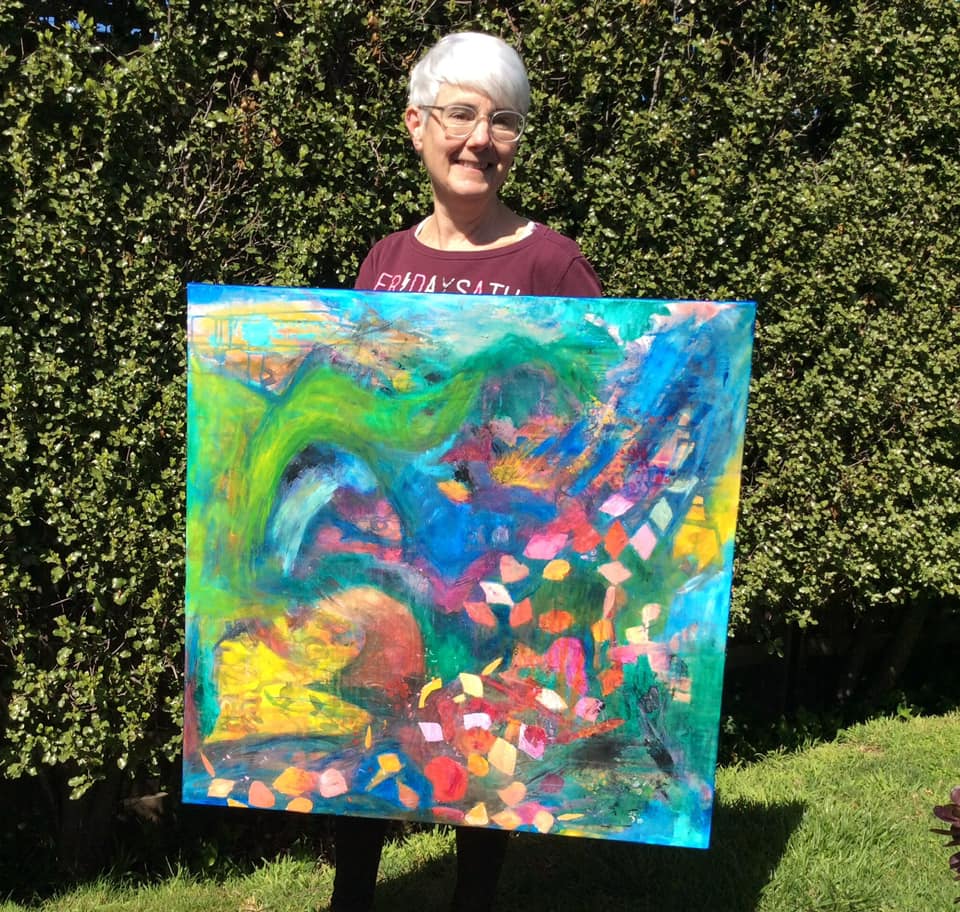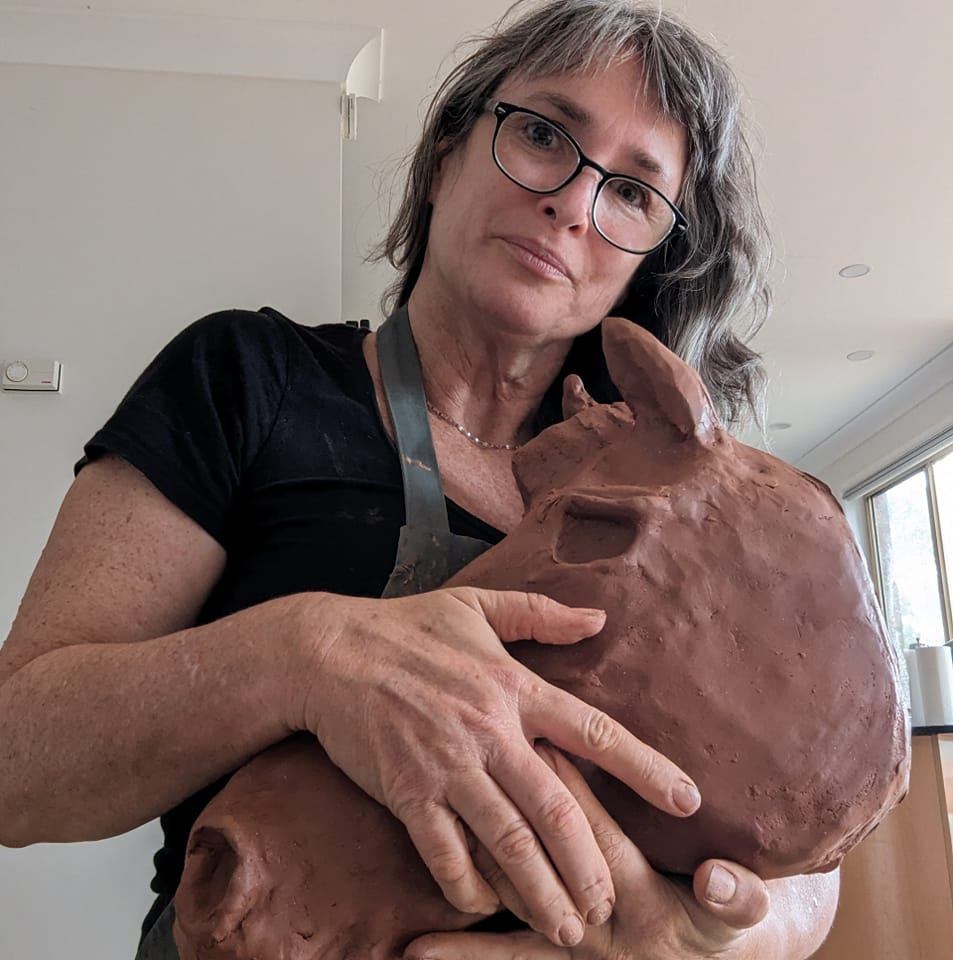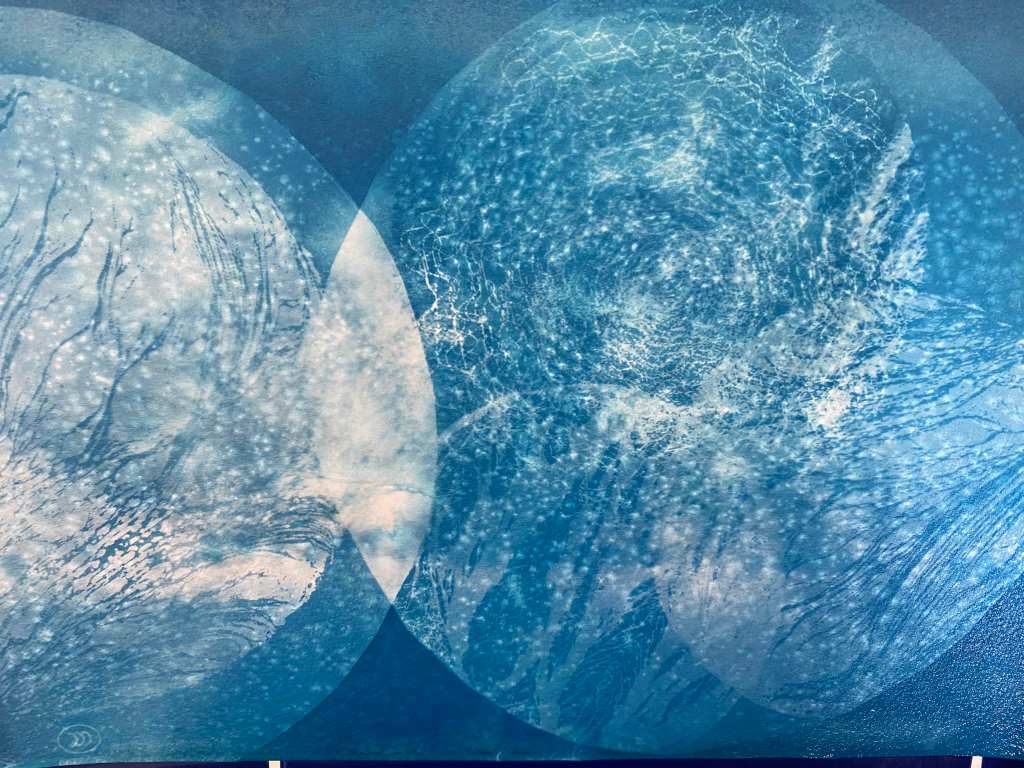In this FREE journey to creative recovery, we’re following Julia Cameron’s bestselling creativity self-help manual, The Artist’s Way, tracing the book’s 12-week program with a series of inspiring ArtsHub articles, resources and ideas for artist-date activities. There’s also a Facebook community group you can join for discussion and support.
To recap, the idea with The Artist’s Way is to commit yourself to a structured creative recovery that will spark joy, remove blocks and build the confidence to play and take risks – whether you’re a professional artist or not. The main tools of the course are Morning Pages and Artist Dates. You can read previous articles here:
- Introduction: an invitation to change your life
- Week 1: Recovering a sense of safety
- Week 2: Recovering a sense of identity
- Week 3: Recovering a sense of power
- Week 4: Recovering a sense of integrity
- Week 5: Recovering a sense of possibility
- Week 6: Recovering a sense of abundance
- Week 7: Recovering a sense of connection
Or you can jump right in and follow along, wherever you are in the process. Grab a copy of the book, start reading and look out for ArtsHub’s weekly articles, published each Monday.
Keep up to date with The Artist’s Way series here
Week 8: Recovering strength, surviving loss
Survival as an artist means learning to survive the inevitable losses that come with the creative process: loss of hope, loss of self-belief, loss of resources and, perhaps worst of all, the potentially humiliating loss of face. (Worrying about what other people think of us, and using our extraordinary imaginative powers to concoct horrible scenarios is a killer of the artistic impulse to continue making and experimenting!)
In this week’s chapter, Julia Cameron says that, while our losses can eventually be turned into gains and strengths, this cannot happen before we properly acknowledge and mourn what we have lost.
‘Because artistic losses are seldom openly acknowledged or mourned,’ she writes, ‘they become artistic scar tissue that blocks artistic growth. Deemed too painful, too silly, too humiliating to share and so, to heal, they become, instead, secret losses.’
What are your secret losses that need to be mourned? It may be the novel that didn’t get published, or wasn’t reviewed well. Or the screenplay that didn’t get made. The role that went to another performer, or the artwork that wasn’t successful in a prize.
On a more humble scale, there’s the loss surrounding creative projects that we need to abandon – the patchwork quilt half-made because it was ugly and too time-consuming, the landscape painting that turned to mud on the canvas or the perfect pot that shattered in the kiln.
Cameron says we must remember that our inner artist is a child. She is easily hurt and emotionally devastated, even while, on another level, the adult self is able to intellectualise rejection, criticism and bad luck. She talks about the damage that teachers, critics, editors and mentors do when they tear apart a work too soon, making a young artist feel ashamed for even trying. Cameron has particularly harsh words for those in academia who are so frustrated by their own inability to create that they use their power to discount and numb the budding creativity of students – instead of providing the essential nutrient: encouragement.
Many of us are have given up too easily on our artistic dreams because we’ve internalised previous losses and negative feedback. We’ve made those losses and setbacks bigger than our desire to create new work, bigger than our ability to take small steps towards what we want next.
Rejection sensitivity
I’ve often wished for a healthier and more resilient creative ego. It’s common knowledge that so often the artists who survive are the ones who totally believe in themselves, sometimes against all logic and lack of evident ability. We may see them as art monsters, arrogant and delusional, but they are often the artists who keep trying, keep working, keep evolving, and they’re brave enough to put their work out into the world to be seen and judged. Even if these artists are mocked and don’t succeed, they have the dignity of continuing to call themselves working artists instead of blocked creatives.
Many of us would rather not try than face the pain of rejection. And make no mistake, it is painful and it sends us to a very young and tender emotional place. I wrote about my own remedies for rejection last year, and here are the First Aid strategies proposed:
Nine strategies for artists who’ve been rejected
- Cry – or at least feel the feelings.
- Wait – sleep on it and let time do its work.
- Connect with your inner circle.
- Learn – ask good questions.
- Get philosophical, get stoic.
- Take action, start moving.
- Use your emotions to create new work.
- Create a ritual to let go of that thing you lost.
- Share and be generous about your failure.
Read: 9 ways to help you deal with creative rejection
As I said then, ‘Every kind of rejection hurts. As social animals we’re wired to avoid rejection from our tribe in order to survive. We’re meant to experience intense discomfort when others shun us. But when we’re rejected for our art, our creative output, the pain has a particular sting, especially when the work in question – our writing or singing or acting or painting – comes from the deepest core of our being and our sense of self. The more we care about the work, the harder the rejection hits. Sometimes we don’t even know how much we wanted something until we’re told we can’t have it.
‘But real artists know that dealing with rejection is part of the artistic life and needs practice in and of itself. Some artists even make a habit of trying out for things they know they won’t get in order to harden themselves up to the inevitable “nos”. It’s not a bad idea. The ability to sit with discomfort is one of the essentials of any kind of growth – whether you’re building physical muscles or building a career.’
Short takeaways from Week 8
There’s so much wisdom and inspiration in this chapter, and stories of artists who overcame and transformed their losses. Here are the quick takeaways that struck me most:
- Quit the drama – take the baby steps required to do the next thing.
- ‘Creativity requires activity, and this is not good news to most of us. It makes us responsible, and we tend to hate that: You mean I have to do something in order to feel better?’
- One of our favourite things to do – instead of our art – is to contemplate the odds. But thinking about the odds is a drink of emotional poison.
- Are we addicted to anxiety instead of action?
- Fill in the form. Don’t expect to win the lottery without a ticket.
- Addiction to anxiety instead of action.
- Work begets work.
- Keep the custody of your own art and don’t hand all the power over to agents, editors or curators.
- Make small changes instead of big ones. Just start!
- Stop limiting yourself because you’re “too old” to do something new. You’ll never be younger than now.
My journey with ‘The Artist’s Way’ this week
Survival is one of the big themes this week, and I’ve been in survival mode. I’ve been so stretched and stressed and dealing with the grief of my dear friend and former colleague David Tiley along with an imminent book deadline that seems unreachable. There were times when I didn’t quite know how I’d get from one moment to the next. I wrote about it on Instagram, and because I’m so time-poor, I’m going to just post it here:
Needless to say, there was no time for solo Artist Dates, but I did notice the small moments of perfection and inspiration. The way the sky looked at dusk over the beach at Point Leo, the clouds making pictures above the trees in Red Hill, the scattering of multicoloured autumn leaves on the canvas of green lawn as I walked my dog. There is beauty everywhere.
I also noticed the way the work I’ve been doing with The Artist’s Way has helped give me strength and comfort – especially the letting go of perfectionism and treating myself with compassion. Morning Pages have been a necessary brain-dump. They are part of my therapeutic process now, of steeling myself for the day and affirming my plans and abilities to keep going.
Here are some of the affirmations I’ve adopted from this week’s chapter. The secret for me, is to choose ones that resonate – ones that don’t feel too silly or far-fetched:
- I have a right to be an artist.
- I can be a good person while also being a good artist.
- Creativity is a blessing I accept.
- I now treat myself and my creativity more generously.
- I now accept hope.
- I now act affirmatively.
- I allow myself to heal from past rejections and failures.
From the ArtsHub Creative Community Facebook Group
I’m hoping to generate more support and activity in the group, and loving the posts people make of their process, their problems and their artworks. Do pop in and share if you’d like. Here are a few to enjoy this week:

Gretchen Miller, another community member, has taken up ceramics after a lifetime working professionally with words and radio production. She is finding the process of playing with clay to be joyful and cathartic – while also a lesson in tenacity when things don’t go to plan.


Other resources
- 46 Artist Date Ideas by Blogsmith
- Revisit collage and other crafts from your childhood
- Check out ArtsHub Events listings with options in all states – activities including art exhibitions, theatre, dance, writing festivals.
- Visit ArtsHub‘s The Artist’s Way Community Facebook group to share your journey, connect with others and ask questions. We’d love to hear from you.






